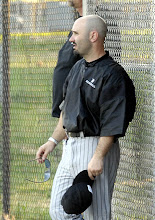Students come with different make-ups and experiences, trying to take on so much material in chunks and pieces. It is like dumping out a puzzle on the floor and having your class put the puzzle together. They will take different approaches in putting the pieces together. Dr. Orey describes the cognitive learning theory as a way to go from sensory memory to long term memory. He believes that the more network models used, will create more connections toward a whole picture (Laureate Ed., 2009). As teachers we are all trying to see that those pieces fit, so the puzzles can be solved. Technology is a tool that brings assistance in creating connections toward student's brains for deeper learning.
"Cognitive style refers to how one thinks", and its' characteristics can influence how they learn best (Lever-Duffy & McDonald, 2008). Our students today are already immersed in this digital world. Using cues, questions, and advances organizers with technology can create the very beginning of those first puzzle pieces. Plugging in Images helps students by enhancing their ability to retrieve, use, and and organize information (Pitler, Hubbell, Kuhn, & Malenoski, 2007). Digital tools create engaging experiences where students can take part in multimedia activities rather than pushing pencil and paper.
When reading further into this weeks assignments I see summarizing and note taking as a continued cognitive approach through technology. After students create some background knowledge through cues and organizers, they can use computers and software programs to hold and share ideas, thoughts, and content. Mr. Hernandez uses an Inspiration program for students to use with a video. He created a template to guide students to information, while allowing them a chance to make additions to their work. In his class they can share with a partner and submit the work for a grade (Pitler, et. al, 2007).
Teachers with the aide of technology can create so many worthwhile learning environments for their students. Students today can watch video clips to create concept maps to fill in organizers. They can share their products with partners to develop problem solving and communication skills. Programs also offer supplemental activities and quizzes for follow up to help with recall and retaining what they saw and worked on in class. I just worked a concept map with my classes today from a BrainPop video on the court system. They typed in notes, shared their work, and submitted the product for evaluation. It created higher level questions afterward about court cases, and they took a quiz from the program to help build on their connections. Technology is a piece to help aid teachers in cognitive learning. Dr Orey discusses how students can get to the piece of information, but it is finding a way to help them get to the piece (Laureate, Ed., 2009). Digital tools help pieces stick together so you can look at the whole puzzle.
Resources:
Laureate Education, Inc. (Executive Producer). (2009) Cognitive learning theories. Baltimore: Author.
Lever-Duffy, J. & McDonald, J. (2008). Teaching and learning with technology (3rd ed. pp. 2–35). Boston: Pearson.
Pitler, H., Hubbell, E., Kuhn, M., & Malenoski, K. (2007). Using Technology with Classroom Instruction That Works. Alexandria, VA: ASCD.
Tuesday, March 16, 2010
Subscribe to:
Post Comments (Atom)




It sound like you have some experience integrating technology tools within your class. Have you noticed any change in your students' learning capabilities, effort, or interest when the lessons include concept mapping and other educational technologies?
ReplyDeleteI would say that I am in a stage of gaining experience with technology. I have noticed that technology can help my classroom management. I think technology makes them part of something, and that is what they crave throughout the day.
ReplyDeleteConcept maps get my students involved with the lesson. They build and add to maps, then share their findings. We then have better discussions and it becomes easier to construct better organizers and notes.
The virtual tours take the place of books, with better visuals and again a feeling that they are part of something. They becomes engaged with the tours and like to ask questions. I see more focus and a reduced level of minor distractions. I have been browsing to find more of these tours for my 8th grade students. It is a challenge when trying to match up with curriculum standards. I see it to be easier if I was back teaching sixth grade history. There are more tours to use for this subject. How are the maps and virtual tours working for you?
As elementary Art teacher, the virtual field trip is great because I don't have any money for field trips in my budget. I just recently took a virtual field trip to San Diego Zoo and had my student view the "PandaCam" and sketch the pandas. They loved it and their drawing were much more successful than the classes that didn'thave access to the streaming video.
ReplyDeleteJay,
ReplyDeleteI love your analogy of the puzzle pieces when referring to the cognitive learning theory. You are completely right, as teachers we have to try and figure out how the pieces fit. Technology is a great tool to use in making these connections with and/or for students. I have never heard of "virtual field trips" until this graduate class. I think being a Social Studies teacher (like us) it is easier to create or find virtual field trips for our students than maybe other content areas. In researching this week, I have found many sites of historical museums that offer online tours. My eyes have totally been opened to other, more efficient and affordable, classroom experiences!